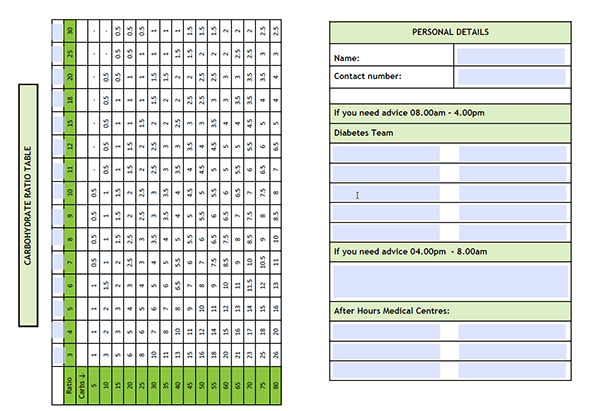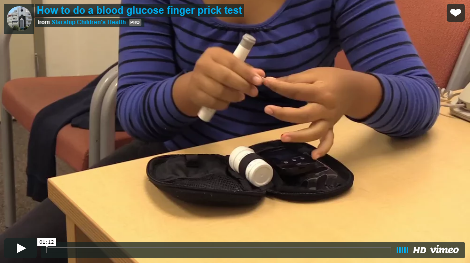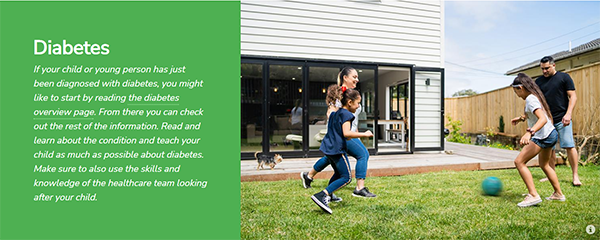Glucose Monitoring In Children With Diabetes
Glucose Monitoring In Children With Diabetes
Glucose monitoring is important for tamariki (children) and rangatahi (young people) with diabetes.
What do I need to know about glucose monitoring measurements in my child with diabetes?
Glucose monitoring measurements are important for tamariki and rangatahi with diabetes to:
- monitor daily blood glucose control and allow insulin adjustment
- detect high or low glucose levels so that treatment can be given if needed
- monitor and treat diabetes during exercise and illness
Monitor glucose levels 4 to 6 times every day
Tamariki and rangatahi with type 1 diabetes need to monitor their glucose levels 4 to 6 times every day, or more if needed. Specific times for testing vary for individual tamariki and rangatahi. Talk to your specialist diabetes team about a plan for testing for your child.
Keep a record of glucose levels
Keep a record of the glucose levels in a diabetes diary. Or you could download them into a computer programme on a regular basis. Depending on the treatment required, tamariki and rangatahi with type 2 diabetes may be able to monitor glucose levels less often. All tamariki and rangatahi with diabetes should keep a diabetes diary to record their glucose levels.
Diabetes diary
The Clinical Network for Children and Young People with Diabetes has developed a 'diabetes diary'. It's for you to record your glucose levels. You can fill in your personal details, and it has guidance about hypo-management and sick day management as well.
To make it into a book - print double-sided on 'small edge'. You can also ask your diabetes team for a copy.
Diabetes diary from the Clinical Network for Children and Young People with Diabetes (PDF, 787 KB).
Target ranges for blood glucose levels
These are generally:
- before meals, 4 to 7 mmol/L
- after meals, 5 to 10 mmol/L
- at bedtime, 6 to 10 mmol/L
- at 3am, 5 to 8 mmol/L
Your diabetes team may give you individualised targets. These may differ slightly to those above.
Video about how to do a blood glucose finger prick test
What do I need to know about continuous glucose monitoring and flash glucose monitoring?
Continuous glucose monitoring (CGM) and flash glucose monitoring (FGM)
CGM and FGM are devices that monitor glucose levels in people with diabetes. The devices are another tool for the management of diabetes. They can be helpful in minimising the number of finger-pricks your child needs. They can also help you to see trends in your child's glucose levels.
Some devices allow remote monitoring.
Many families manage their child's or young person's diabetes well without CGM or FGM.
How the devices work
CGM and FGM use sensors which are inserted into the fatty layer under the skin.
With FGM, you can get a glucose reading by holding a reader or a smart phone over the sensor.
In CGM, a transmitter sends data constantly to a receiver, a compatible insulin pump or a smart device (such as a phone or tablet).
Sensor glucose readings are taken from interstitial fluid, not from blood. Interstitial fluid is the fluid that surrounds the cells of your tissue below your skin. Glucose moves from blood vessels and capillaries first and then into interstitial fluid. When rising or falling quickly (for example, after a meal and/or insulin) sensor glucose will be a bit behind the changes in glucose monitoring. So, it will almost always be a little different. It's important to check glucose levels by finger-prick if symptoms don't match sensor glucose, or you have concerns.
One of the real benefits of using continuous or flash glucose monitoring with sensors is that it lets you see patterns and trends which can be harder to see with intermittent finger-prick glucose testing.
CGM allows families to set alarms for high and low glucose levels.
Limitations of these devices
These devices are currently not funded in New Zealand, and cost is a barrier for many.
There can be some variation between the readings from continuous or flash glucose monitoring and blood glucose from finger-pricks. This difference depends on the individual and the device. There will be times when you need to confirm the result with a finger prick blood glucose test.
See more KidsHealth content on diabetes
This page last reviewed 07 April 2022.
Do you have any feedback for KidsHealth?
If you have any feedback about the KidsHealth website, or have a suggestion for new content, please get in touch with us.
Email us now


